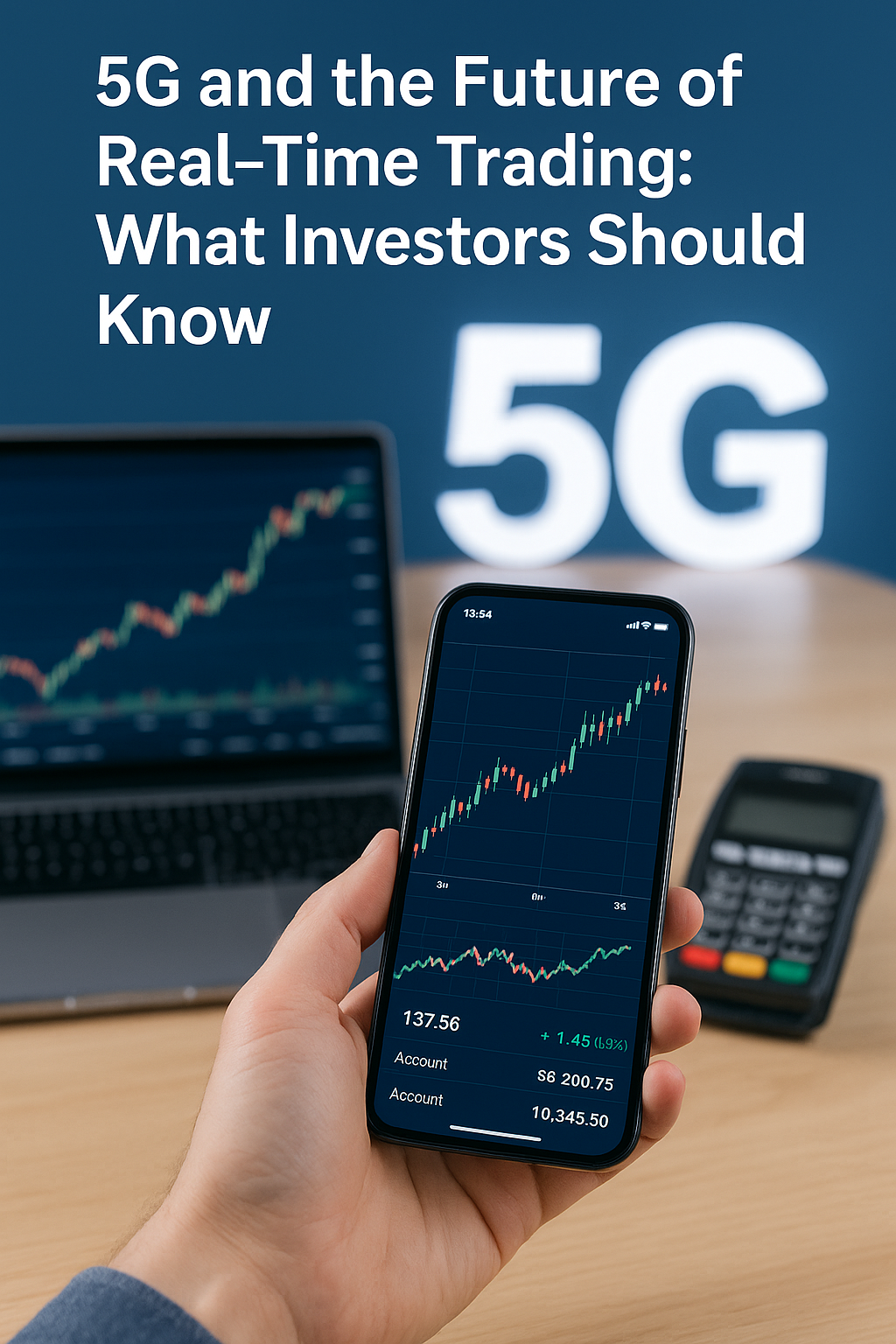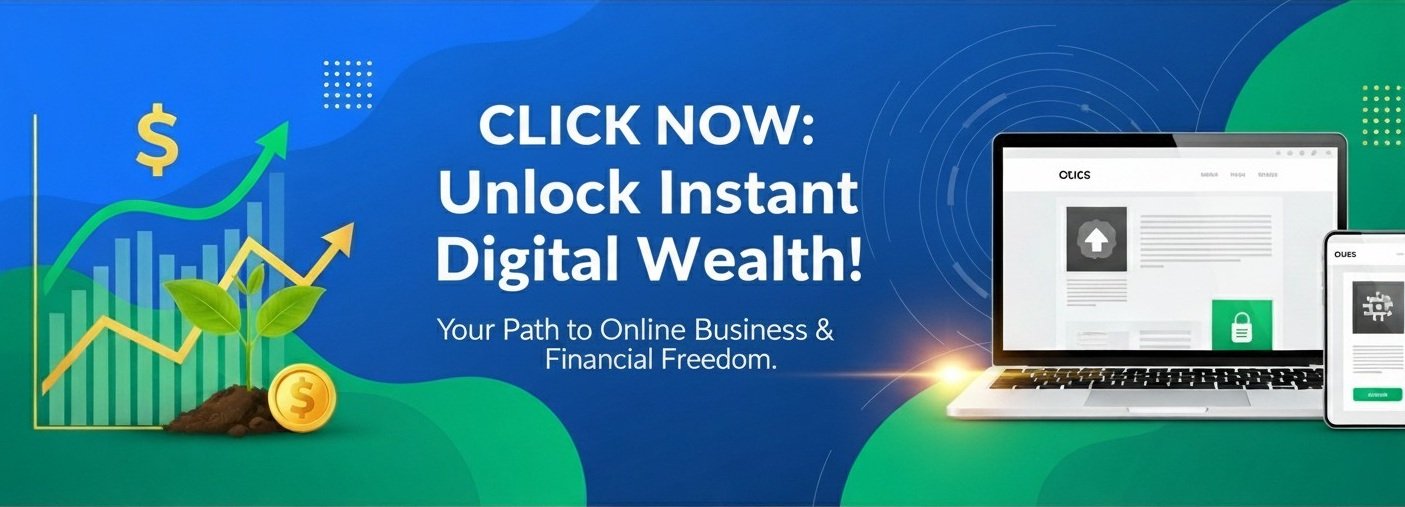The relentless march of technological progress continues to reshape every facet of modern life, and the financial markets are certainly no exception. While previous generations of wireless technology primarily focused on enhancing mobile communication, the fifth generation, or 5G, promises a paradigm shift that extends far beyond faster downloads on our smartphones. With its unprecedented speeds, ultra-low latency, and massive connectivity capabilities, 5G is poised to fundamentally alter the infrastructure upon which real-time trading operates, potentially redefining market efficiency, investment strategies, and the very nature of financial interactions.
This essay delves into the transformative potential of 5G for the world of real-time trading. We will begin by demystifying the core technical advancements of 5G, outlining what sets it apart from its predecessors. Subsequently, we will explore the critical role of speed and data transmission in current trading environments, particularly in high-frequency and algorithmic trading. The core of our discussion will then focus on the precise mechanisms through which 5G’s unique attributes—its incredible speed, minimal delay, and capacity for widespread connections—are expected to influence trading efficiency, market data distribution, and the accessibility of financial markets. Furthermore, we will examine the significant opportunities that 5G presents for investors, from new trading strategies to growth within related technological sectors, while also critically assessing the inherent risks and formidable challenges that accompany this technological leap. Understanding the intricate interplay between advanced telecommunications and the fast-paced world of finance is essential for modern investors navigating an increasingly connected and automated market landscape.
Understanding 5G Technology: The Foundation of a New Era
To truly appreciate the potential impact of 5G on real-time trading, it is essential to first understand what 5G actually is and how it fundamentally differs from previous wireless generations. It’s not merely a faster iteration of 4G; it represents a new architecture for connectivity designed to support a vastly more complex and data-intensive world.
Key Features and Advancements of 5G
The transformative power of 5G stems from three core technical pillars that distinguish it from 4G LTE:
- Enhanced Mobile Broadband (eMBB): This is the most commonly touted feature of 5G: significantly higher speeds. While 4G offers peak speeds of hundreds of megabits per second (Mbps), 5G can achieve theoretical peak speeds of up to 10 gigabits per second (Gbps) under ideal conditions, with typical real-world speeds in the hundreds of Mbps to a few Gbps. This massive increase in bandwidth means data can be transmitted and received much faster, facilitating the rapid exchange of large datasets, which is crucial for modern trading operations.
- Ultra-Reliable Low-Latency Communications (URLLC): This is perhaps the most critical feature for real-time trading. Latency refers to the delay between when data is sent and when it is received. While 4G latency is typically in the range of 50-100 milliseconds (ms), 5G aims for ultra-low latency, potentially as low as 1 millisecond (ms) end-to-end, comparable to fiber optic connections. This near-instantaneous communication is vital for applications where response time is paramount, such as autonomous vehicles, remote surgery, and, most relevant here, high-frequency financial trading.
- Massive Machine-Type Communications (mMTC): 5G is designed to support an unprecedented number of connected devices per square kilometer – up to 1 million devices/km², compared to 4G’s 100,000 devices/km². This capability is essential for the burgeoning Internet of Things (IoT), enabling vast networks of sensors, smart devices, and distributed systems to communicate efficiently. In finance, this could support a future where every market sensor, every data point, and every trading terminal is seamlessly and reliably connected.
These three pillars collectively enable capabilities that were simply not feasible with previous generations, paving the way for truly real-time, highly responsive, and interconnected applications across industries, including finance.
How 5G Differs from 4G LTE
The leap from 4G to 5G involves several underlying technological innovations:
- Millimeter Wave (mmWave) Technology: 5G utilizes higher frequency bands (mmWave) in addition to sub-6 GHz bands. mmWave offers massive bandwidth and ultra-low latency but has a shorter range and is more susceptible to obstructions (like buildings), requiring a denser network of small cells.
- Massive MIMO (Multiple-Input Multiple-Output): This technology uses a large number of antennas at the base station to send and receive more data simultaneously, improving spectral efficiency and capacity.
- Beamforming: Directs the wireless signal precisely towards specific devices, improving signal quality and efficiency, especially in crowded areas.
- Network Slicing: A key architectural feature that allows mobile network operators to create multiple virtualized, independent logical networks on the same physical infrastructure. Each “slice” can be customized with specific performance characteristics (e.g., guaranteed low latency for financial applications), enabling tailored services for different industries.
- Edge Computing: 5G networks are designed to integrate closely with edge computing, where data processing occurs closer to the source of data generation (e.g., at the base station or a local data center) rather than sending all data to a centralized cloud. This further reduces latency and bandwidth strain, which is highly beneficial for real-time applications.
(For more technical details on 5G, the GSMA, an organization representing mobile operators worldwide, provides comprehensive resources: https://www.gsma.com/futurenetworks/5g/).
The Current Landscape of Real-Time Trading: The Need for Speed
Modern financial markets are already operating at incredible speeds, driven by technological advancements over the past few decades. Understanding the existing infrastructure and the relentless pursuit of lower latency provides context for 5G’s potential impact.
Fiber Optics and Microwave Links: The Backbone of Speed
Today’s real-time trading, especially in the realm of high-frequency trading (HFT) and ultra-low latency strategies, relies heavily on state-of-the-art telecommunications infrastructure.
- Fiber Optic Cables: These are the primary conduits for high-speed data transmission globally. Data travels as pulses of light through thin glass fibers, offering incredibly high bandwidth and relatively low latency over long distances. Trading firms spend immense sums to lay the shortest possible fiber optic routes between financial hubs (e.g., New York, Chicago, London) to gain even microsecond advantages.
- Microwave Links: For specific routes where physical obstacles make fiber optics impractical or for gaining fractional latency advantages, microwave radio links are used. Data travels as electromagnetic waves through the air, which can be faster than light through fiber (due to the speed of light being slower in glass than in air). Trading firms invest in microwave towers and relays for critical connections between exchanges and data centers.
Despite these advanced infrastructures, there are always inherent physical limitations. The speed of light itself, even in a vacuum, imposes a fundamental barrier. Every millisecond of latency translates into a competitive disadvantage for traders who need to react to market events faster than their rivals.
The Relentless Pursuit of Lower Latency
In algorithmic trading, particularly HFT, latency is paramount. A firm that can receive market data, process it, make a trading decision, and send an order back to the exchange a few microseconds faster than a competitor can gain a significant edge. This “latency arbitrage” allows them to profit from tiny, fleeting price discrepancies before they disappear.
The obsession with reducing latency has led to:
- Co-location: Trading firms pay exchanges substantial fees to place their servers physically within the exchange’s data center. This minimizes the physical distance data has to travel, reducing latency to its absolute minimum (often single-digit microseconds).
- Specialized Hardware: Use of Field-Programmable Gate Arrays (FPGAs) and Graphics Processing Units (GPUs) for ultra-fast data processing and algorithm execution.
- Dark Fiber and Proprietary Networks: Firms invest in their own dedicated fiber optic lines (“dark fiber”) and build highly optimized, proprietary networks to ensure maximum speed and control over their data flow.
Even with these efforts, the current infrastructure faces challenges related to scalability, flexibility, and the last-mile problem (connecting individual traders or edge devices to the main network with low latency). This is where 5G promises to introduce a transformative element.
(For insights into high-frequency trading and its reliance on speed, academic papers and financial market analyses often provide detailed information. The SEC has also published on market structure: https://www.sec.gov/).
How 5G Will Influence Trading Efficiency: A Game Changer
The unique attributes of 5G—its unprecedented speed, ultra-low latency, and massive connectivity—are poised to profoundly influence various aspects of trading efficiency, offering a potential paradigm shift in how financial markets operate.
Reduced Latency: The Millisecond Advantage Multiplied
The most direct and impactful benefit of 5G for real-time trading is its ultra-low latency. While current HFT firms achieve single-digit millisecond or even microsecond latencies via fiber and co-location, 5G can bring near-fiber-like latency to a wireless environment.
- High-Frequency Trading (HFT): For HFT firms, even fractional reductions in latency are critical. 5G could enable new arbitrage opportunities by allowing faster reaction to price changes across different markets or exchanges that are not co-located. It could also enhance strategies that rely on rapid order book analysis and quick execution. This could democratize ultra-low latency trading, making it accessible to a wider range of participants beyond those with massive infrastructure budgets.
- Algorithmic Trading: Beyond pure HFT, all forms of algorithmic trading will benefit. Faster data transmission means algorithms can receive market data, news feeds, and other inputs more quickly, enabling them to process information, update models, and make trading decisions with reduced delay. This responsiveness is crucial for strategies that adapt dynamically to market conditions.
- Market Data Transmission: Ultra-low latency ensures that market data (quotes, trades, order book depth) reaches traders and analytical systems almost instantaneously. This provides a more immediate and accurate picture of market dynamics, reducing information asymmetry and supporting fair pricing.
- Execution Certainty: For time-sensitive orders, lower latency means higher certainty that an order will be executed at or near the intended price, minimizing slippage.
Increased Bandwidth: The Data Deluge Enabler
5G’s significantly higher bandwidth means it can handle a massive volume of data transmission, which is crucial for modern trading.
- Real-time Market Data Feeds: Trading firms ingest enormous amounts of market data from various exchanges globally. 5G can handle these bandwidth-intensive data feeds more efficiently, ensuring that comprehensive market information is available without bottlenecks.
- Complex Analytical Models: Many advanced trading strategies rely on complex machine learning and AI models that require constant updates with new data. 5G’s high bandwidth can facilitate the rapid transmission of large model parameters and training data, improving the real-time adaptability of these intelligent trading systems.
- Rich Media and Visualizations: For human traders and analysts, 5G could enable the real-time streaming of rich media, complex visualizations, and interactive dashboards, providing a more immersive and informative view of market conditions, even from remote locations.
- Alternative Data Sources: The ability to rapidly transmit and process vast amounts of alternative data (e.g., satellite imagery, social media sentiment, geo-location data) will be greatly enhanced by 5G’s bandwidth, allowing for more comprehensive and nuanced market insights.
Massive Connectivity: The Internet of Financial Things
5G’s capacity to connect an unprecedented number of devices per square kilometer opens up new possibilities for distributed and interconnected financial ecosystems.
- Internet of Things (IoT) in Finance: Imagine a future where every ATM, point-of-sale terminal, and even physical security sensor in a financial institution is seamlessly and reliably connected to a high-speed, low-latency 5G network. This could enhance operational efficiency, improve real-time fraud detection, and provide more granular data for financial analysis.
- Edge Computing in Trading: 5G networks are designed to work hand-in-hand with edge computing. By processing market data and executing parts of trading algorithms closer to the source (e.g., at the exchange’s edge data center or even on a local 5G device), latency can be further reduced, and bandwidth usage optimized. This could lead to more robust and distributed trading infrastructure.
- Distributed Ledger Technologies (DLT) and Blockchain: While blockchain transaction speed is limited by block confirmation times, 5G’s low latency and high connectivity could significantly improve the speed of data propagation across DLT networks. Faster propagation means nodes receive updates more quickly, potentially leading to faster consensus mechanisms and more efficient operation of decentralized finance (DeFi) platforms, impacting cryptocurrency trading, tokenized assets, and smart contract execution.
- Remote and Mobile Trading: 5G will provide a far more robust and reliable connection for traders working remotely or on mobile devices. This could empower financial professionals to execute complex trades, analyze markets, and manage portfolios with near-desktop performance, even when not physically present at a trading desk. This increased flexibility could lead to a broader distribution of trading talent.
Enhanced Reliability and Capacity: Robust Financial Networks
For critical financial operations, network reliability and capacity are paramount. 5G offers significant advancements in these areas.
- Guaranteed Quality of Service (QoS) via Network Slicing: 5G’s network slicing capability allows mobile network operators to create dedicated, customized virtual networks (“slices”) with guaranteed performance characteristics (e.g., ultra-low latency, dedicated bandwidth) specifically for financial institutions. This ensures that critical trading data and operations receive priority and operate without interference from other network traffic, enhancing reliability and security for financial data transmission.
- Reduced Network Congestion: The immense capacity of 5G networks means they are less susceptible to congestion, even in densely populated financial districts or during periods of high market activity. This ensures consistent performance and reduces the risk of data delays or dropped connections for financial applications.
- Resilience and Redundancy: The distributed nature of 5G small cells and edge computing infrastructure can inherently provide greater network redundancy, making the system more resilient to localized outages and enhancing overall uptime for critical financial services.
These combined influences suggest that 5G will not merely make existing trading faster but will enable entirely new capabilities and redefine the technological backbone of global financial markets.
Opportunities for Investors: Navigating the 5G Frontier
The transformative power of 5G extends beyond the operational efficiency of trading firms; it presents significant opportunities for savvy investors looking to position their portfolios for the future. Understanding these opportunities involves looking at both the direct impact on trading and the growth potential within related technological sectors.
Faster Information Flow and Execution
- Democratized Speed: While ultra-low latency was once the exclusive domain of large institutional players with immense infrastructure budgets, 5G could democratize access to near real-time market data and execution speeds for a broader range of investors and trading firms. This could level the playing field, enabling smaller firms and even advanced retail traders to implement strategies that were previously out of reach due to latency constraints.
- Enhanced Mobile Trading: For individual investors, 5G will deliver a vastly superior mobile trading experience. The ability to receive real-time market data, execute complex orders, and access sophisticated analytical tools on a smartphone or tablet with fiber-like speeds and reliability will be a significant leap. This could empower investors to react more quickly to news, manage portfolios effectively on the go, and participate in markets with greater confidence from any location.
- New Investment Strategies: The ultra-low latency and massive data processing capabilities of 5G could pave the way for entirely new algorithmic trading strategies that capitalize on market microstructures previously inaccessible due to latency. This includes more nuanced arbitrage opportunities, faster reaction to order book changes, and more dynamic hedging strategies.
Growth in Related Sectors
Investors can explore opportunities in companies that are directly involved in the 5G rollout and its ecosystem:
- Telecommunications Infrastructure Providers: Companies that build and maintain the physical infrastructure for 5G networks, including cell towers, fiber optic networks, and small cells. This foundational layer is essential for the widespread adoption of 5G.
- Semiconductor Companies: Firms that design and manufacture the chips and components essential for 5G devices, base stations, and network equipment. This includes processors, modems, and radio frequency (RF) components that enable 5G capabilities.
- Network Equipment Manufacturers: Companies that produce the specialized hardware and software for 5G network core, radio access networks (RAN), and enterprise 5G solutions.
- Edge Computing and Cloud Providers: As 5G drives more data processing to the network’s edge, companies providing edge computing hardware, software, and localized cloud services will see increased demand.
- IoT Device Manufacturers and Software Developers: As 5G enables massive connectivity for IoT, companies creating IoT devices, sensors, and the software platforms to manage and analyze IoT data will experience significant growth, including those with financial applications.
- Cybersecurity Firms: The expanded attack surface and increased data flow facilitated by 5G will necessitate more robust cybersecurity solutions. Companies specializing in network security, data encryption (including post-quantum cryptography), and threat intelligence will be critical.
Investing in these enabling technologies and infrastructure providers could offer exposure to the broader economic impact of 5G beyond just the financial sector. However, investors must conduct thorough due diligence, as competitive landscapes and technological shifts within these industries are also dynamic.
Risks and Challenges: The Road Ahead for 5G in Finance
Despite its immense promise, the widespread adoption and full realization of 5G’s benefits in real-time trading are accompanied by significant risks and formidable challenges that Wall Street and the broader financial ecosystem must address.
Cybersecurity Risks: An Expanded Attack Surface
The very attributes that make 5G transformative also amplify cybersecurity risks.
- Massive Connectivity: The sheer number of connected devices (IoT) in a 5G environment drastically expands the potential attack surface for malicious actors. Each new connected sensor or device could be a potential point of entry for cybercriminals.
- Edge Computing Vulnerabilities: Pushing data processing to the network’s edge introduces new security challenges, as these distributed nodes may be harder to secure and monitor than centralized data centers.
- Increased Data Flow: The higher bandwidth means more data in transit, increasing the potential impact of data breaches or interception.
- Network Slicing Security: While network slicing offers isolation, ensuring the security integrity of each slice and preventing cross-slice attacks is a complex challenge.
- DDoS Attacks: The higher bandwidth and capacity of 5G networks could potentially be leveraged for more powerful Distributed Denial of Service (DDoS) attacks, aiming to disrupt financial operations.
Protecting sensitive financial data and critical trading infrastructure in a 5G world will require continuous innovation in cybersecurity measures, including advanced encryption (potentially post-quantum cryptography), AI-driven threat detection, and robust network segmentation.
Infrastructure Rollout and Cost
- Uneven and Costly Deployment: Building a ubiquitous 5G network, particularly one capable of delivering ultra-low latency consistently, requires a dense network of small cells and significant fiber optic backhaul. This rollout is immensely expensive and will be uneven, with dense urban financial centers likely getting robust coverage first, potentially creating a digital divide.
- Spectrum Availability: Access to sufficient spectrum (especially millimeter wave) is crucial, and securing this spectrum can be costly and subject to regulatory hurdles.
- Building Penetration: mmWave signals struggle to penetrate buildings, which is a significant challenge for indoor coverage in large financial complexes. This may necessitate specialized indoor 5G solutions.
Regulatory and Oversight Concerns
The rapid technological advancements of 5G raise new questions for regulators.
- Fair Access and Market Stability: Regulators (like the SEC and FINRA in the U.S.) will need to ensure that 5G’s low latency and high bandwidth capabilities do not disproportionately favor large, well-resourced firms, potentially exacerbating inequalities in market access and creating an unfair advantage. This could impact market structure and liquidity.
- Oversight of Automated Trading: As trading becomes even more automated and reliant on 5G-enabled algorithms, regulatory bodies will face increased challenges in monitoring, auditing, and ensuring accountability for algorithmic behavior, particularly during extreme market events.
- Data Governance and Privacy: The sheer volume and granularity of data that can be collected and transmitted via 5G raise new concerns about data governance, privacy, and how financial institutions utilize this information.
Technological Adoption Curve and Integration Complexity
- Legacy Systems Integration: Financial institutions operate with vast, complex legacy IT infrastructures. Integrating 5G capabilities seamlessly with these existing systems will be a significant technological and logistical challenge, requiring substantial investment and time.
- Skill Set Gap: There will be a demand for new skill sets, including network engineers with 5G expertise, cybersecurity specialists, and financial technologists who understand both telecom and trading infrastructure.
- Interoperability: Ensuring seamless interoperability between different 5G network providers, device manufacturers, and financial applications will be crucial for a cohesive ecosystem.
Potential for Increased Market Manipulation
While 5G aims for greater transparency and efficiency, its advanced capabilities could, theoretically, be misused.
- High-Speed Manipulation: The ultra-fast execution speeds could potentially facilitate new forms of high-speed market manipulation, such as spoofing or layering, making them harder to detect by traditional surveillance methods.
- Information Asymmetry: If only a select few firms gain early, superior access to 5G’s full capabilities for market data and execution, it could exacerbate information asymmetry, potentially disadvantaging other market participants.
These risks and challenges highlight that while 5G offers revolutionary potential, its responsible and equitable integration into the financial markets will require careful planning, significant investment, proactive regulatory engagement, and a commitment to continuous cybersecurity innovation.
Conclusion
The advent of 5G technology marks a pivotal moment for the future of real-time trading and the broader financial markets. With its unprecedented capabilities for ultra-low latency, massive bandwidth, and pervasive connectivity, 5G promises to accelerate data transmission to near instantaneous speeds, enhance the responsiveness of trading algorithms, and support a vastly more interconnected financial ecosystem. From revolutionizing high-frequency trading and the distribution of critical market data to enabling more robust mobile trading experiences and fostering innovation in areas like decentralized finance, the potential for 5G to drive efficiency and unlock new opportunities for investors is profound.
However, the path to a fully 5G-integrated financial landscape is not without its formidable challenges. Cybersecurity risks are amplified by an expanded attack surface and increased data flow, demanding advanced protective measures. The costly and uneven rollout of 5G infrastructure, coupled with the complexities of integrating it with existing legacy systems, presents significant logistical hurdles for financial institutions. Furthermore, regulatory bodies face the crucial task of ensuring fair access, maintaining market stability, and overseeing increasingly automated trading behaviors in a highly dynamic environment. The potential for increased market manipulation or an exacerbation of competitive advantages for technologically sophisticated players also warrants careful consideration and proactive mitigation.
Ultimately, 5G will not simply make existing trading faster; it will fundamentally transform the underlying infrastructure and open doors to entirely new paradigms of financial interaction and strategy. For modern investors, understanding this evolving technological frontier is key to interpreting market dynamics, identifying emerging investment opportunities in related sectors, and positioning portfolios for the long term. While the full realization of 5G’s transformative power in finance will be a gradual, iterative process, its trajectory points towards a future where connectivity and computational speed redefine the very essence of real-time trading, making it faster, more efficient, and more globally interconnected than ever before.
Disclaimer: This article is for informational purposes only and does not constitute financial advice. Please consult a qualified financial advisor before making any investment decisions.
Related External Links
- GSMA – 5G Overview: A comprehensive resource from the global organization representing mobile operators, covering 5G features and applications. https://www.gsma.com/futurenetworks/5g/
- Federal Reserve – Payment Systems: Provides context on the evolution of payment infrastructure, which 5G will influence. https://www.frb.gov/paymentsystems.htm
- Investopedia – High-Frequency Trading (HFT): Explains HFT and its reliance on speed in current markets. https://www.investopedia.com/terms/h/high-frequency-trading-hft.asp
- Ericsson – 5G in the Financial Sector: Reports and insights from a leading telecom equipment provider on 5G’s impact on finance. https://www.ericsson.com/en/industries/financial-services/5g
- Qualcomm – 5G in Finance: Insights from a major chipmaker on how 5G empowers financial services. https://www.qualcomm.com/news/onq/2021/04/15/5g-financial-services
- PwC – The Impact of 5G on Financial Services: A consulting firm’s analysis of 5G’s broader implications for the financial industry. https://www.pwc.com/us/en/industries/financial-services/library/5g-financial-services.html
- EY – How 5G will transform financial services: Another consulting perspective on the strategic opportunities and challenges. https://www.ey.com/en_us/financial-services/how-5g-will-transform-financial-services








